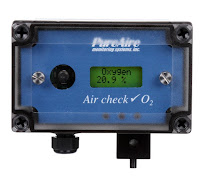Inkjet Perovskite solar cells may help shape the future of energy production by lowering costs, and transparency.
Solar panels used to be costly and time-consuming to produce—and quite expensive on the consumer side. New technologies have driven costs as well as production time down, to the benefit of consumers. See what's new with solar panels and where the solar cell technology is going.
New Solar Panel Developments
In traditional solar panels, silicon acts as a semiconductor. By doping the silica material with gallium and arsenic impurities, the silicon-based solar panel is able to capture solar energy and convert the sun's energy to electricity. While there are other materials that can act as semiconductors for solar energy, silicon is ideal because is forms an oxide at high temperatures. The oxide makes it easy to product consistent, high quality solar panels. The latest generation of solar cells use perovskite rather than silicon.
In 2009, researchers first discovered that perovskite could also be used to make photovoltaic solar cells. Despite the potential of this discovery, perovskites weren't considered a good choice for solar panels, because the materials needed to be heated to such high temperatures that very few materials could be coated with the perovskite solution. Glass could withstand the high heat, but a glass solar panel would be an impractical product for obvious reasons.
A young scientist recently discovered a new way to work with perovskites. Using an evaporation method, Polish scientist Olga Malinkiewicz, was able to coat flexible foil with perovskites. To speed the substrate drying process, nitrogen was used. By blowing dry nitrogen gas over the wet perovskite film, the resulting evaporation happened faster and more consistently. Without utilizing nitrogen in the process, the panels could have an inconsistent coverage, which would lead to poor energy conversion rates.
The resulting solar panels were thin and flexible, both in their material application and their use cases. Imagine a portable solar panel that could attach to a laptop, drone, or car, something that could capture the sun's energy indoors or outdoors and travel with you, to power whatever you needed.
Since her initial discovery, Malinkiewicz has refined the approach. The latest generation of perovskite solar cells are created with an inkjet printing procedure which makes them faster and cheaper to produce. With mass production feasible from an economic perspective, the perovskite solar cells can be a popular option to add electricity to areas that do not have an underlying power grid, whether that's rural communities or developing countries.
The technology is still being refined, so you won't see widespread perovskite solar cells just yet. However, researchers are cheering the innovation and its potential to revolutionize energy distribution.
One thing to consider moving forward with perovskite solar panels is the use of nitrogen in the process. Anywhere nitrogen is used, there's a safety risk should the gas leak from supply lines.
How an Oxygen Monitor Can Help Detect Nitrogen Gas Leaks
Nitrogen leaks create health risks because nitrogen displaces oxygen, which humans need to breathe. Undetected, a nitrogen leak could create oxygen-deficient air, leading to respiratory distress and eventually death via asphyxiation. Nitrogen gases is both colorless and odorless, which means it would be impossible to detect a leak relying on the senses.
The easiest way to detect a leak is to measure ambient oxygen using an oxygen monitor. Oxygen monitors continually track levels of oxygen, sounding an alarm if levels fall to the OSHA threshold where safety is at risk. With flashing lights and a loud alarm, workers will be able to exit the room before the onset of health problems.
PureAire creates industry-leading oxygen monitors that last for 10 or more years, with no calibration or maintenance needed. Learn more or view product specs at www.pureairemonitoring.com.









